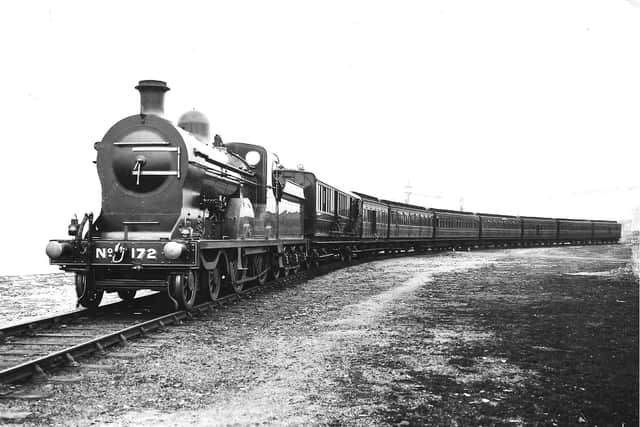Police flying column is rushed to Balmoral halt (1933)
and live on Freeview channel 276
They vehicles had carried a flying column of 100 policemen armed with rifles, and the men dismounted in the vicinity of the Great Northern Railway at Balmoral, where the line was patrolled until about 10pm.
No information was forthcoming at police headquarters, but it was understood that certain information had been received which resulted in the employment of the mobile column.
Advertisement
Hide AdAdvertisement
Hide AdThe mobile force was standing by at an early hour on the morning of Tuesday, February 7, this in expectation of a call to another portion of the Great Northern Railway line.


The News Letter noted: “It is understood that rumours of proposed sabotage influenced these precautionary measures.”
Meanwhile it had been reported that the level crossing gates at Coleraine had been tampered with by the insertion of pieces of metal in the cog wheels.
The News Letter commented: “The placing of pieces of iron between the points at certain parts of the railway line in the Coleraine district had also caused considerable trouble and might have led to a serious accident had the outrage not been discovered.
Advertisement
Hide AdAdvertisement
Hide AdIn the vicinity of the Bleachgreen at Whiteabbey, bolts had been discovered on the railway lines.
It was noted: “The police have been notified of all attempts to interfere with the running of trains and are keeping a sharp look out.”
At a meeting of the Lame branch of the National Union of Railwaymen, the following resolution was passed: “Certain statements have appeared in the press that are misleading to the public, and in view of this we wish to emphasise that no members of the NUR or the ASLE&F in this area, at least, are engaged, in maintaining the present skeleton service. We also take strong exception to men other than legitimate railway men appearing in traffic or locomotive uniform. It has been the duty of practical railwayman to give every possible consideration to the safety of the travelling public, and we consider the present arrangements arc a great dancer to life and property.”